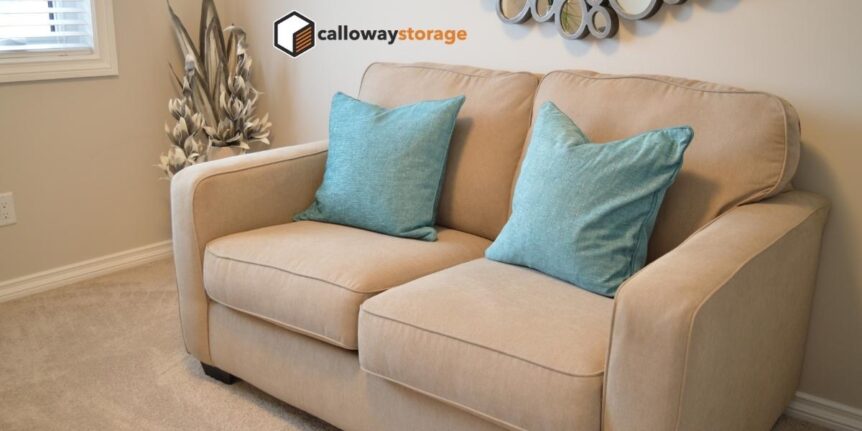There are lots of reasons why people put household furnishing into storage: temporary storage while moving, long-term storage for a future move, downsizing, estate disbursement, and more. The important thing is to properly protect furniture to ensure that when it is moved on to the next location, or a different owner, it is in the same condition that it was in before it went into storage.
Here are some helpful tips about preparing furniture for storage.
#1 – Clean the Furniture Before Storing It
The first thing to do is give the item a good cleaning to remove any surface dirt and stains. Long term storage of soft furnishing with stains can become impossible to clean later on as the stain sets over time. Use a dry cloth to remove dust, vacuum upholstery and spot clean any stains. Then, let the piece completely dry. If the item is metal use an appropriate polish to clean and seal the finish. This will delay the build up of tarnish. It’s important the the furniture piece is completely dry before storing it or wrapping it, as moisture inside wraps can cause mildew stains.
#2 – Take Larger Pieces Apart
Tables, desk, chairs, can be disassembled to make it easier to pack your storage unit and carry the items when you move. The important thing here, is to keep all the parts labeled and together. For example, place screws and tools in a zipped lock bag and tape that under a chair seat. Keep all the pegs for bookshelves in a bag taped to the back of the bookshelf. For complicated pieces, take pictures of the different stages of the process so you can refer to them later when it’s time to put the item back together.
#3 – Pack Furniture
Furniture going into longer term storage needs to be adequately protected from damage during moving, the storage environmental conditions, and occasional handling within your unit. Old sheets, drop cloths and plastic sheeting can be used to wrap over the item. Padded covers or mover’s blankets are great for large wooden items that need to be protected from scratching. Extra padding can be put over corners or delegate woodwork and bubble wrap can be used to wrap furniture legs. Heavy cardboard can be used to build up a package around glass items held securely with heavy duty tape. Leather or fabric items can be wrapped in sheets or furniture storage bags. Tape should never be put directly on furniture but should be used to hold wrapping together around the item. Over time the adhesive in tape can attack the surface of furniture and damage surfaces including varnish.
#4 – Moving Furniture Into the Unit
It’s important that furniture not rest against the interior sides of your unit and it is a good idea to protect the item from wicking moisture from the flooring. One way to do this is to line the bottom of your storage unit with a tarp to place items on. Furniture is best stored in the position it was went to be used in. For example, don’t store a sofa on its side or end as it will put force on glued joints that might not withstand it over time. It is better to stack lighter furniture on top of heavier items, only if the item will not cause a score mark because of the impact over time. Be sure to make a list of what furnishing have been stored and any other notes about condition or location within the storage unit.
Following these simple tips will help you better prepare to store your furniture and will help ensure that when the items are taken out of storage they are ready to use and look as good as the day they went in.
If you need any help selecting a self storage unit or would like information about our portable storage units please give use a call. We’d be pleased to answer any questions that you have. 705-375-0777

